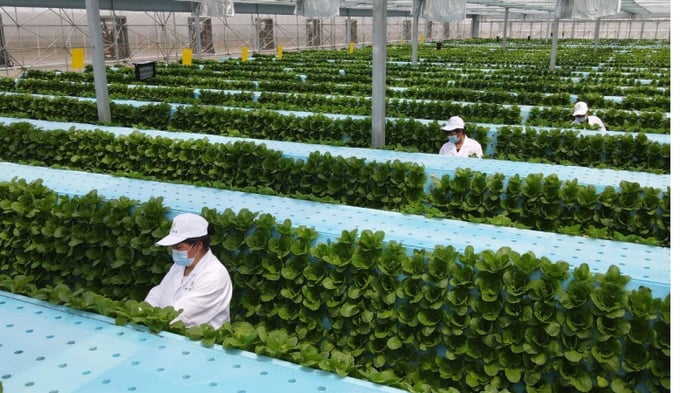December 6, 2025 | 12:00 GMT +7
December 6, 2025 | 12:00 GMT +7
Hotline: 0913.378.918
December 6, 2025 | 12:00 GMT +7
Hotline: 0913.378.918

Smarter, more sustainable methods are enabling record-breaking yields while safeguarding soil health for future generations.
As China strides toward its 2025 agricultural modernisation goals, a key element of its traditional farming practices – fertiliser – is being phased out in favour of innovative approaches to food production. Smarter, more sustainable methods are enabling record-breaking yields while safeguarding soil health for future generations, according to a report by the South China Morning Post.
China has reduced fertiliser use for eight consecutive years since 2015, the report said, citing data from the National Bureau of Statistics. Despite this, the country’s agricultural output has steadily increased. In 2024, grain production hit a historic high of 706.5 billion tonnes, up 1.6 per cent from 2023, as per National Bureau of Statistics data.
This growth has been credited to more targeted fertiliser applications that supply only the nutrients crops need, coupled with advancements in seed technology, farmland quality, and mechanisation.
China faces growing challenges, including climate change, geopolitical uncertainties, and the need to sustain nearly 18 per cent of the global population with just 9 per cent of the world’s arable land. The country is pursuing food security while promoting sustainable agricultural practices.
Guided by its 14th Five-Year Plan (2021-25), the government has increased funding for agricultural research and development, South China Morning Post highlighted. In 2023, the Ministry of Agriculture and Rural Affairs allocated 15.9 billion yuan ($2.18 billion) to R&D – a 25.2 per cent rise from the previous year.
Improvements in seed varieties, planting methods, and mechanisation have boosted the yield per hectare of key crops. Between 2021 and 2024, soybean and corn yields rose by 2.54 per cent and 4.87 per cent respectively, while rice saw a 0.63 per cent increase, the report said.
Mechanisation in harvesting also rose, from 71 per cent in 2021 to over 73 per cent in 2023, improving efficiency and bringing down post-harvest losses. By 2035, reduced food waste could save an estimated 53.9 million tonnes of staple grains, the report noted citing CASS projections.
China has expanded its arable land for three years in a row, reaching 124.3 million hectares in 2023, aided by farmland reclamation campaigns. In 2024, the total sown area for grain climbed to 119.3 million hectares, marking a 1.4 per cent increase since 2021.
However, challenges persist. While domestic food production has risen, imported crops surged by 12 per cent in 2023, following an 11 per cent drop in 2022. With potential trade tensions looming, especially with the US – a major supplier of agricultural goods to China – boosting agricultural productivity has become more critical than ever.
business-standard

(VAN) After three years, Project FST/2020/123 collected approximately 3,000 insect specimens, classified them into about 50 morphological groups, and identified around 40 species, including several new species.
/2025/12/01/0509-2-175427_206.jpg)
(VAN) Emission-reducing coffee areas in Lam Dong have entered the new crop with stable yields, improved quality, and a remarkably enhanced cultivation environment.

(VAN) The Institute of Agricultural Sciences for Southern Vietnam (IAS) marked its 100th anniversary in Ho Chi Minh City, celebrating a century of growth as a leading institute contributing significantly to Viet Nam’s agricultural development.

(VAN) An increasing number of livestock farms are using biogas generators to create a source of renewable electricity, helping to save costs and mitigate environmental pollution.

(VAN) Small changes in rice cultivation, from irrigation methods and straw collection to input management, are paving a new way for Vietnam's agriculture in the journey toward emission reduction.

(VAN) With the project of converting biogas into renewable electricity, Australia is both helping pig farms reduce their energy costs by up to 25% and contributing to environmental protection.
![Hue aims for Net Zero: [1] Initial steps from green transportation](https://t.ex-cdn.com/nongnghiepmoitruong.vn/608w/files/huytd/2025/11/28/0853-anh-6-giao-thong-xanh-hue-094717_940-153724.jpg)
(VAN) For sustainable development, Hue City is implementing many solutions to promote green transportation, which is an important initial step on the journey to building a Net Zero Hue.